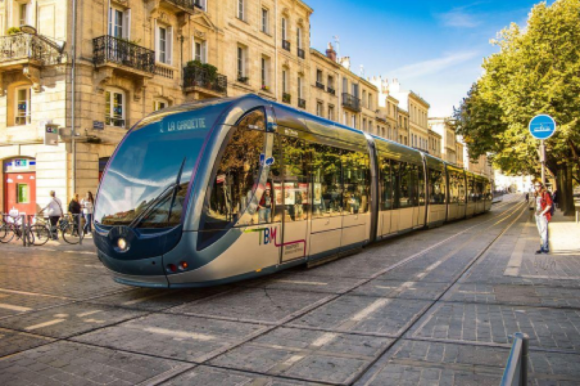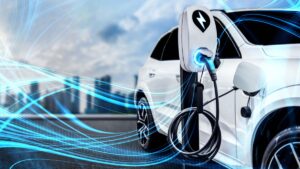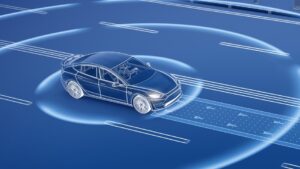As the world grapples with the effects of climate change and environmental damage, finding eco-friendly ways to get around has become even more important. The goal of sustainable transportation is to reduce the environmental impact of travel and move toward greener, more efficient ways of traveling. This article discusses some of the most innovative and eco-friendly ways of traveling that will change the way we travel in the future.
1. Electric Vehicles
Electric vehicles (EVs) are leading the way when it comes to eco-friendly mobility options. Electric cars don’t use gasoline like regular cars. Instead, they run on electricity, which can come from renewable energy sources like hydropower, solar power, and wind power. Switching from fossil fuels to electricity helps clean the air and reduce greenhouse gas emissions. Advances in electric vehicles (EVs) depend on advances in battery technology. New improvements allow electric vehicles to go further and charge faster. As more charging stations are built and battery prices drop, electric vehicles are becoming more accessible and suitable for everyday use.
2. Hybrid Vehicles
Hybrid vehicles are another step towards greener transportation. These cars are more fuel efficient than regular cars because they have both an internal combustion engine and an electric motor. Hybrid cars can reduce fuel consumption and pollution because they use both gasoline and electricity. The idea goes a step further with plug-in hybrids, where the car can be charged from an external power source. This means a longer all-electric driving range. It is especially useful in cleaning the city air and reducing gasoline consumption, making hybrid technology a good choice for passenger and fleet transportation.
3. Bus and Train Systems
One of the important ways to promote sustainable transportation is to invest in and develop public transportation systems. When the public transportation network is developed, there are fewer private cars on the road. This means less traffic and less pollution. Adding clean energy sources such as electric or hydrogen buses and making rail systems more efficient is part of the modernization of public transportation. New developments in transportation technology, such as self-driving buses and smart tickets, make public transportation more convenient and attractive, leading more people to choose public transportation instead of their cars.
4. Bicycles and E-Bikes
Bicycles and electric bicycles (e-bikes) are green alternatives to cars for short to medium distances. Cycling is a healthy way to travel without any pollution. This also reduces traffic. E-bikes make riding more fun by giving you an electric boost, making it easier to ride hills and over long distances. To get more people to use bicycles as a daily means of transportation, many cities are investing in bike paths and bike-sharing programs. The use of both regular bicycles and e-bikes can help stimulate urban development in a more environmentally friendly way.
5. Walking and Biking Facilities
The most basic form of environmentally friendly transportation is walking, which has virtually no impact on the environment. Walking is safer and more enjoyable when infrastructure such as sidewalks, crosswalks, and pedestrian bridges are improved. People are more likely to walk short distances when an environment is designed to be pedestrian-friendly, which reduces the demand for cars. Cities that invest in making neighborhoods active, walkable, and close to amenities encourage people to use public transportation more, which has health and environmental benefits.
6. Ridesharing and Carpooling
Carpooling and carpooling are effective ways to reduce the number of cars on the road and the amount of pollution each person produces. Ridesharing can help people use less gas, avoid traffic jams, and reduce the environmental impact of transportation. Ridesharing apps make it easier for people to find each other and share rides. Rideshare programs, on the other hand, are often targeted to specific routes or commuting needs. Both ideas help to get the most out of vehicles and make transportation systems work better.
7. Hydrogen Fuel Cells
Another promising way to make transportation more environmentally friendly is through the use of hydrogen fuel cells. Hydrogen fuel cells use the chemical reaction between hydrogen and oxygen to generate electricity. All that remains is water. Buses, trucks, and trains, which carry heavy loads and travel long distances, are good candidates for this technology. Hydrogen fuel cells can be refueled quickly and have a longer range than some battery-electric vehicles. As hydrogen production and infrastructure improve, fuel-cell vehicles could significantly reduce traffic pollution.
8. Renewable Energy Powered Transportation
A key component of sustainable development is building transportation infrastructure that uses renewable energy. Electric vehicle charging stations, public transportation systems, and even street lighting can be powered by solar panels, wind turbines, and other forms of renewable energy. By using clean energy for transportation, we can reduce the use of fossil fuels and lower overall greenhouse gas emissions. With the development of smart grids and energy storage solutions, there are more ways to use renewable energy in transportation.
9. Green Airlines
Sustainable aviation is a new field of study that aims to reduce the environmental impact of flying. Efforts to reduce aircraft fuel consumption include improving engine efficiency and using lighter materials. There is also growing interest in biofuels, synthetic fuels, and other alternative fuels that are more environmentally friendly than traditional jet fuels. Researchers are also exploring ways to improve electric and hybrid aircraft, which could help reduce pollution on short-haul flights. As the aviation industry changes, sustainability is an important factor in shaping the future of air travel.
10. Urban Planning and Smart Mobility
Planning cities and finding smarter ways to get around go hand in hand with sustainable transportation. Intelligent transportation systems use data and technology to improve public transportation, improve traffic flow, and encourage people to walk or bike. More and more cities are implementing them. Intelligent traffic management systems, real-time information applications, and integrated mobility services are making urban transportation networks more efficient and sustainable. We can make cities more livable and better for the environment by planning them to prioritize sustainable transportation options and reduce car use.
Conclusion
Sustainability and environmental protection will become increasingly important in the future of transportation. Electric and hybrid vehicles, public transit, and cycling infrastructure are just a few ways to make green transportation a reality. As technology advances and greener methods are adopted, we will move closer to transportation systems that have a lower impact on the environment and improve the lives of people around the world. Adopting these best green transportation options is essential to making the future cleaner, more efficient, and stronger.




